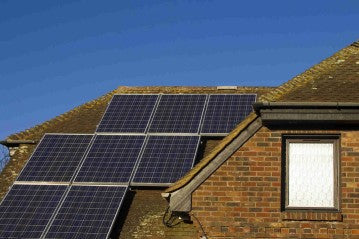
Solar energy is gaining popularity as a sustainable and eco-friendly power source. As customers consider purchasing solar energy systems, understanding the requirements of solar inverters becomes crucial. One important aspect is the ventilation and airflow needed to ensure optimal performance and longevity of the inverter. In this blog post, we will explore the topic of ventilation for solar inverters, addressing common questions and providing valuable insights for potential solar energy consumers.
1. Do Inverters Give Off Heat?
Solar inverters are electronic devices that convert the direct current (DC) generated by solar panels into alternating current (AC) for use in homes or businesses. Like any electronic device, inverters generate heat during operation. The amount of heat produced depends on factors such as the size of the inverter, its efficiency, and the load it is handling.
2. How Much Airflow Does an Inverter Need?
Proper airflow is essential to dissipate the heat generated by the inverter and maintain optimal operating temperatures. Inadequate airflow can lead to reduced performance and potentially shorten the lifespan of the inverter. Therefore, providing sufficient ventilation is crucial.
3. How Much Ventilation Does a Solar Inverter Need?

The ventilation requirements for a solar inverter depend on its size, design, and the manufacturer's specifications. It is important to consult the manufacturer's documentation and guidelines to determine the exact ventilation requirements for a specific inverter model. However, we can provide some general insights:
3.1 How Much Space Does an Inverter Need?
Solar inverters typically require a certain amount of clearance space around them to ensure proper ventilation. This space allows for unrestricted airflow and helps prevent overheating. The required clearance can vary depending on the inverter's size and ventilation design, but a general rule of thumb is to provide at least 6-12 inches of clearance on all sides.
4. Where Should I Place My Inverter?
The placement of your inverter plays a crucial role in ensuring adequate ventilation. Consider the following factors when deciding on the location:
4.1 Can I Put My Inverter in A Cupboard?
Placing the inverter inside a cupboard or an enclosed space is generally not recommended. Cupboards restrict airflow and trap heat, which can lead to the inverter overheating. It is essential to provide ample space around the inverter for proper ventilation.
4.2 Does an Inverter Need to Be Outside?
While solar inverters are designed to be installed outdoors, they can also be placed indoors as long as the ventilation requirements are met. If installed indoors, ensure that the space has adequate airflow, is well-ventilated, and has sufficient clearance around the inverter. If the inverter is located outdoors, it should be protected from direct sunlight, rain, and other environmental factors that can affect its performance and lifespan.
5. Finally
When installing a solar energy system, it is crucial to consider the ventilation requirements of the solar inverter. Providing sufficient airflow and clearance space around the inverter ensures optimal performance, efficiency, and longevity. Always consult the manufacturer's guidelines and recommendations for specific ventilation requirements. Additionally, it is beneficial to work with a professional solar installer who can assess your specific installation site and provide expert advice on inverter placement and ventilation.
By understanding and addressing the ventilation needs of your solar inverter, you can optimize the performance of your solar energy system, maximize its lifespan, and enjoy the long-term benefits of clean and renewable energy.
Remember, a well-ventilated solar inverter is a happy and efficient inverter!

0 comments